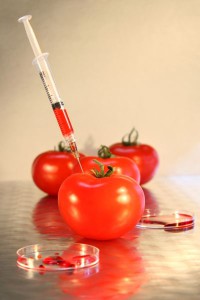 In the mould and die world, is it possible to produce in sustainable manner? Can mould and die makers reduce the environmental impact? Various examples show how it is possible to use plastics and energy derived from renewable sources.*
In the mould and die world, is it possible to produce in sustainable manner? Can mould and die makers reduce the environmental impact? Various examples show how it is possible to use plastics and energy derived from renewable sources.*
Paola Ginestra
No matter whether we are speaking of tomato-based car components or of packages deriving from the shell of shellfishes, it is clear that in the future more and more biomaterials will become part of the plastic industry. Even if announcements like the Ford one, which highlights a collaboration with Heinz company aimed at exploring the potentialities of the treatment of tomato wastes to reinforce polymeric materials, or researches by the Wyss Institute of Harvard, focused on the production of plastic deriving from the extraction of chitin from shrimp shells and silk proteins, try to conquer a place on the front page, the reality is that the development of plastic starting from renewable raw materials is rapidly spreading.
The Brazilian petrochemical Group Braskem, for instance, is going on increasing the productive capacity of Green class PE thanks to the bio-ethanol derived from cane sugar to about 200,000 tons year in the only polymerization plant in Triunfo, in Brazil. Among the latest productions based on this polymer, we can count the plastic caps of the Nomacorc chain and the products by TetraPak (one of the first that adopted bio-polyethylene). The primary attraction that products of this kind can exert on consumers is based on the impact they can have on the emissions of carbon dioxide. The data concerning the analysis of the lifecycle of several companies, recently released, highlighted that Green polyethylene exerts a negative influence on carbon dioxide, succeeding in reducing 2.15Kg of CO2 for each ton of di Green PE produced. Alexandre Elias, manager of the division renewable chemical products of Braskem, expressed the current business policy as follows: “The sugar cane industry has worked until now through sustainability practices and it was demonstrated that the efficient use of wastes, the generation of renewable energy and to sustain biodiversity can turn into great benefits for the environment in the production of green plastic”. Nevertheless, the profits deriving from the environment protection and the slowdown of the European eco-sustainable market have prevented further developments: “The current manufacturing technology of Green PE is very expensive” adds Elias in a recent interview, “it should be considered a top quality product otherwise it will not make any sense to continue on this path”.
It is likely that the big development of Green PE will be affected by the shortage of available PE at low cost released by the new polymerization plants powered by shale in USA. Still in the opinion of Elias, the North American market undoubtedly takes care of the manufacturing eco-sustainability but it is also very attentive to the price trend. Concerning the shale gas, he can confirm that “it issues a big challenge, it can result in a slowdown of the new plant rate”.
Attention to price
The market sensitivity to the cost trend was a decisive factor in the company’s decision of not proceeding to the construction of new plants for the production of Green PP presently. Whereas the manager states that there are more opportunities in the sale of upper quality products based on Green PP, due to the complexity of the chemical process involved compared to Green PE, and this would be mirrored by the price, too. The company has already undertaken a development course towards PP, created in partnership with Novozymes, but it is also focusing on other long-term technologies that seem to be more competitive on the market.
The key process in the production of polyethylene from bio-ethanol, or other resources, is based on the conversion of the latter into ethylene.
This year, the French petrochemical Group Total has announced the introduction of a new highly effective technology in the cost reduction, developed in the lapse of two years with IFP Energies Nouvelles and the subsidiary company Axens.
Atol technology produces bio-ethylene by dehydration of the bio-ethanol using a high performance catalyst developed by Total in its research centre at Feluy in Belgium. The relevant benefits deriving from this technology are expected to include the use of a sturdier catalyst and a simpler purification permitting a direct integration of PE, PS, PET and ABS into production lines.
Last year, the company BP started up a pilot plant at Hull, UK, to provide a demonstration of its Hummingbird technology of ethanol dehydration. The process, developed inside the company’s Technology Center, is presented as a ultra-selective second-generation technology that uses patented catalysts to reach a high conversion efficiency.
While the ethanol-ethylene development goes on, the company Sabic is using a different approach with the introduction of its first renewable products based on PE and PP. Instead of using renewable raw materials directly in the polymerization plant, the approach consists in introducing them directly in the cracking phase. The renewable content in the final polymer is then certified according to the protocol of ISCC (International Sustainability and Carbon Certification) that includes a system of traceability and of calculation of the mass conservation (the equivalent contribution to the initial renewable raw material in the final product). The company will produce its renewable PE and PP classes in the production plant at Geleen in Holland, using waste vegetable oils and fats. The company affirms that in the Geleen site they use the only cracker in Europe able to manage these primary heavy oils. Concerning this, Mosaed Al-Ohali, executive vice president of Sabic, states: “The company is moving towards the area of certified renewable polyolefins according to the needs of our customers that are increasingly demanding for sustainable packaging solutions to satisfy both consumers’ demand and the regulations in force”.
The company BASF is supporting the approach based on the mass conservation. The company’s spokesman affirms that the mass conversation concept confirmed by the certification grants to customers that the opportune volume of fossil raw material has been replaced by renewable raw material for each purchased product. The company clarifies that: “The raw material is physically introduced into the production site but it cannot be traceable or directly connected with a specific product, due to the complexity of the manufacturing system”. “This is the reason why we needed an approach based on a certified location of resources.” BASF affirms that the mass conservation approach will be applied in principle on all of its organic products. The company presented the renewable certification as option for the Ultramid customers of the film manufacturing industry at the Interpack show in May. The certification of renewable contribution by third parties, which the company describes as one of the highest quality standards on the biomass traceability, is released by Tuv Sud on the basis of the mass conversation method and grants a sound annual coverage. The company is also working in such a way as to obtain the standardization of the mass conservation method by CEN.
“Building blocks”
Most of the current work is going towards the substitution of the base blocks of the polymeric industry with products deriving from renewable or biologic resources. These fundamental chemical products include succinic acid, adipic acid, butanediol and furans. This year, Succinity, based on succinic acid, born from the collaboration between BASF and Corbion Purac, has attained the first profits from the new structure at 10,000 tons per year at Montmelò in Spain. The plant uses a type of patented fermentation and state-of-the-art process technologies and it is proven that it can release a product with a dioxide imprint of 1 Kg of CO2/Kg versus 2.6 KgCO2/Kg deriving from alternative petrochemical products. Anyway, the marketing and sales manager of the company Markus Hummelsberger told the delegates of AMI conference that, to become successful products, the “bio-based” products will have to result in an added value in the final application as well as in a renewable content. Reverdia, born from the collaboration between the chemical Group Royal DSM and starch derivates Roquette, is producing “bio-based” succinic acid on trade scale in the plant at Cassano Spinola, in Italy, in a volume of 10,000 tons/year. The President of Reverdia Marcel Lubben states: “Since when we changed from an economy based on fossil fuels into one based on more sustainable resources, all producers are researching alternative solutions”. The United States company BioAmber is accelerating, describing at Sarnia 2015, in Canada, what, according to the company, will probably be the biggest plant using succinic acid, with about 30,000 tons per year. At the beginning of the year, BioAmber signed a 15-year contract with the development Company headquartered in the United States Vinmar International to transfer the entire production of 1, 4 butanediol (BDO) to the new plant featuring 100,000 tons/year to be built in Sarnia. The company intends to produce the BDO from its biologic succinic acid using the DuPont catalization technology and it confirms it will be very competitive in terms of costs compared to petrochemical products.
 Alternative to Polyethylene Terephthalate
Alternative to Polyethylene Terephthalate
Last month the company Avantium received the funding of 36 million Euros overall by Coca-Cola, Danone, Apla, and Swire Pacific to permit the accomplishment of the industrial validation of its first plant for the production of polyethylene furanoate (PEF), which the company declaims as the 100% biologic alternative to PET. The CEO of Avantium states: “In the last two years we have made great strides. In our pilot plant at Geleen (NL) we are already producing the material at a rate of 20 tons but obviously our partners need a bigger quantity of it for technical and market tests. Produced from furan-dicarboxylic acid and monoethylene glycol, using the YXY technique by Avantium, PEF offers similar or even better performances than PET but producing a carbon imprint in the environment under 50-70%.
The company Rennovia has produced the first sample quantities of the 100% biologic PA6,6 this year. The polymer has been produced from the company’s biologic adipic acid Rennlon and from HMD (hexa-methylenediamine), for which the company grants the possible production from natural glucose, thus lowering costs by 25% compared to the productions from petrochemical products. The United States giant for agricultural products Archer Daniel Midland (ADM), investor in Metabolix bioplastic enterprise, this year has announced it has funded Rennovia with 25 million dollars. Further evidence of the industry’s growing interest in the so-called “green chemistry” is demonstrated by the establishment of the first Matrica plant in Porto Torres. Other two plants will be soon under construction on the basis of the180 million-worth structure born from the merging between the chemical Group Versalis and the bioplastic Novamont enterprise. The Matrica project was born in 2011 with the aim of creating a structure based on a “green” chemistry, exploring the potentialities of vegetable materials. The first plant converts vegetable oils into monomers and intermediates; the two additional plants will permit the production of oils for the industry of rubber, bio-lubricants and polymeric plasticizers.
Renewable polyamides
It is immediate to notice that, with all new investments in the fermentation and in the chemistry from raw materials, especially in the sector of polyamides, renewable polymers are not a novelty. The company Arkema first introduced into the textile industry a 100% renewable Rilsan PA11 castor oil already in 1950 and it has started the marketing of its technological solutions since the Sixties. Afterwards the company extended its PA industry to other product lines. The company has used the same PA11 to create the flexible Rilsan HT resin and it has developed new versions of the same Rilsan PA using castor oil. The takeover of the Chinese enterprise Hipro Polymers has allowed the development of some PA additives that offer a renewable content by 45.62 and 100%.
The line of biological renewable products by DSM includes EcoPaXX, 70% renewable from castor oil and 50% renewable from thermoplastic Arnitel Eco co-polyester. The company has also decided that it will shift to BDO to increase the renewable co-polyester content to 70%. The company Evonik produces a series of classes of renewable PA under the name of Vestamid Terra, with a renewable content that ranges from 45 to 100%. Last year the company also communicated the set-up of a new plant in Slovakia for the production of biologic aminolauric acid as alternative to the monomer now used for the Vestamid line. The company has also affirmed that the palm kernel oil makes the PA polymer renewable by 100%, with identical performance to petrochemical classes. The polymer was successfully tested in piping applications and the company will soon start delivering some test products to customers.



